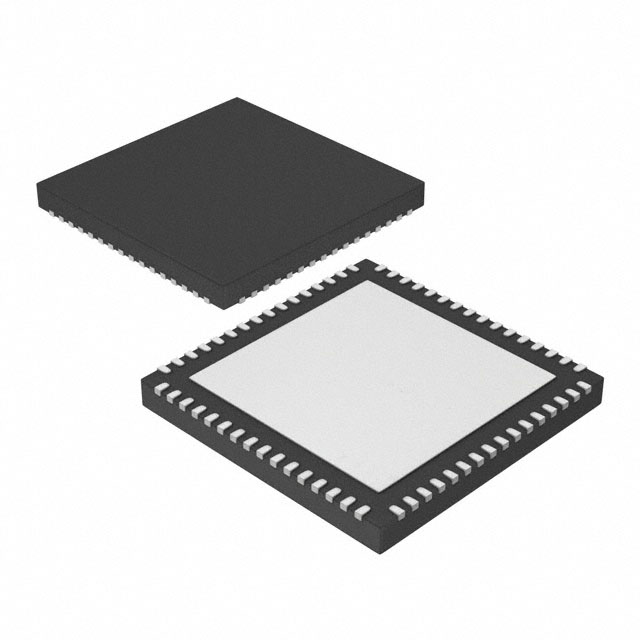Xem thông số kỹ thuật để biết chi tiết sản phẩm.

MB9AF111LAQN-G-AVE2
Product Overview
- Category: Integrated Circuit (IC)
- Use: This IC is used for various electronic applications, including microcontrollers and embedded systems.
- Characteristics: The MB9AF111LAQN-G-AVE2 offers advanced features such as high processing speed, low power consumption, and a wide range of input/output options.
- Package: The IC comes in a compact and durable package, ensuring easy handling and protection against external factors.
- Essence: The MB9AF111LAQN-G-AVE2 is an essential component for designing and developing electronic devices with enhanced functionality and performance.
- Packaging/Quantity: The IC is typically packaged in reels or trays, with varying quantities depending on the manufacturer's specifications.
Specifications
- Operating Voltage: 3.3V
- Clock Frequency: Up to 100 MHz
- Flash Memory: 256 KB
- RAM: 32 KB
- Number of Pins: 64
- Communication Interfaces: UART, SPI, I2C
- Analog-to-Digital Converter (ADC): 12-bit resolution, 8 channels
- Timers/Counters: Multiple timers/counters for precise timing and event management
- Operating Temperature Range: -40°C to +85°C
Detailed Pin Configuration
The MB9AF111LAQN-G-AVE2 has a total of 64 pins, each serving a specific purpose. Here is a brief overview of some key pins:
- VDD: Power supply pin (+3.3V)
- GND: Ground pin
- RESET: Reset pin for initializing the IC
- XTAL1, XTAL2: Crystal oscillator input and output pins for clock generation
- GPIOx: General-purpose input/output pins for connecting external devices
- UARTx: Universal Asynchronous Receiver/Transmitter pins for serial communication
- SPIx: Serial Peripheral Interface pins for synchronous communication
- I2Cx: Inter-Integrated Circuit pins for multi-master, multi-slave communication
- ADCx: Analog input pins for analog-to-digital conversion
- PWMx: Pulse Width Modulation output pins for generating variable-width pulses
For a complete pin configuration diagram and detailed pin descriptions, please refer to the manufacturer's datasheet.
Functional Features
- High Processing Speed: The MB9AF111LAQN-G-AVE2 operates at a clock frequency of up to 100 MHz, enabling fast and efficient data processing.
- Low Power Consumption: This IC is designed to minimize power consumption, making it suitable for battery-powered applications.
- Versatile Communication Interfaces: The presence of UART, SPI, and I2C interfaces allows seamless integration with various external devices and peripherals.
- Flexible I/O Options: The GPIO pins provide flexibility in connecting and controlling external components, expanding the functionality of the system.
- Precise Timing and Event Management: The built-in timers/counters enable accurate timing control and event synchronization.
- Analog-to-Digital Conversion: The integrated ADC facilitates the conversion of analog signals into digital values, enabling precise measurement and control.
Advantages and Disadvantages
Advantages: - High processing speed enhances overall system performance. - Low power consumption prolongs battery life in portable devices. - Versatile communication interfaces ensure compatibility with a wide range of devices. - Flexible I/O options allow customization and expansion of functionalities. - Precise timing and event management enable synchronized operations. - Integrated ADC simplifies analog signal processing.
Disadvantages: - Limited flash memory and RAM capacity may restrict complex applications. - Availability and pricing may vary depending on the supplier. - Requires technical expertise for proper utilization and integration.
Working Principles
The MB9AF111LAQN-G-AVE2 operates based on the principles of microcontroller architecture. It consists of a central processing unit (CPU), memory units, communication interfaces, and various peripherals. The CPU executes instructions stored in the flash memory, interacts with external devices through the communication interfaces, and controls the system's operation based on programmed logic.
The IC receives input signals from sensors or user inputs, processes them using the CPU and other integrated components, and generates output signals to drive actuators or display information. The precise working principles depend on the specific application and programming implemented by the user.
Detailed Application Field Plans
The MB9AF111LAQN-G-AVE2 finds applications in various fields, including but not limited to:
- Industrial Automation: Used in control systems for machinery, robotics, and process automation.
- Consumer Electronics: Integrated into smart home devices, wearable technology, and entertainment systems.
- Automotive: Employed in automotive electronics for engine control, infotainment systems, and driver assistance.
- Medical Devices: Utilized in medical equipment for monitoring,
Liệt kê 10 câu hỏi và câu trả lời thường gặp liên quan đến ứng dụng MB9AF111LAQN-G-AVE2 trong giải pháp kỹ thuật
Sure! Here are 10 common questions and answers related to the application of MB9AF111LAQN-G-AVE2 in technical solutions:
Question: What is the MB9AF111LAQN-G-AVE2 microcontroller used for?
Answer: The MB9AF111LAQN-G-AVE2 microcontroller is commonly used in various technical solutions, such as industrial automation, consumer electronics, and automotive applications.Question: What is the operating voltage range of the MB9AF111LAQN-G-AVE2?
Answer: The MB9AF111LAQN-G-AVE2 operates within a voltage range of 2.7V to 5.5V.Question: How many I/O pins does the MB9AF111LAQN-G-AVE2 have?
Answer: The MB9AF111LAQN-G-AVE2 has a total of 64 I/O pins.Question: Can the MB9AF111LAQN-G-AVE2 be programmed using C/C++ language?
Answer: Yes, the MB9AF111LAQN-G-AVE2 can be programmed using C/C++ language, along with other programming languages like assembly.Question: Does the MB9AF111LAQN-G-AVE2 support communication protocols like UART, SPI, and I2C?
Answer: Yes, the MB9AF111LAQN-G-AVE2 supports popular communication protocols like UART, SPI, and I2C, making it suitable for interfacing with other devices.Question: What is the maximum clock frequency of the MB9AF111LAQN-G-AVE2?
Answer: The MB9AF111LAQN-G-AVE2 can operate at a maximum clock frequency of 80 MHz.Question: Does the MB9AF111LAQN-G-AVE2 have built-in analog-to-digital converters (ADC)?
Answer: Yes, the MB9AF111LAQN-G-AVE2 has a built-in 12-bit ADC, allowing for analog signal measurements.Question: Can the MB9AF111LAQN-G-AVE2 be used in low-power applications?
Answer: Yes, the MB9AF111LAQN-G-AVE2 features various power-saving modes and can be optimized for low-power applications.Question: What is the flash memory size of the MB9AF111LAQN-G-AVE2?
Answer: The MB9AF111LAQN-G-AVE2 has a flash memory size of 256 KB.Question: Is the MB9AF111LAQN-G-AVE2 suitable for real-time applications?
Answer: Yes, the MB9AF111LAQN-G-AVE2 offers real-time performance with its high-speed processing capabilities and interrupt handling mechanisms.

